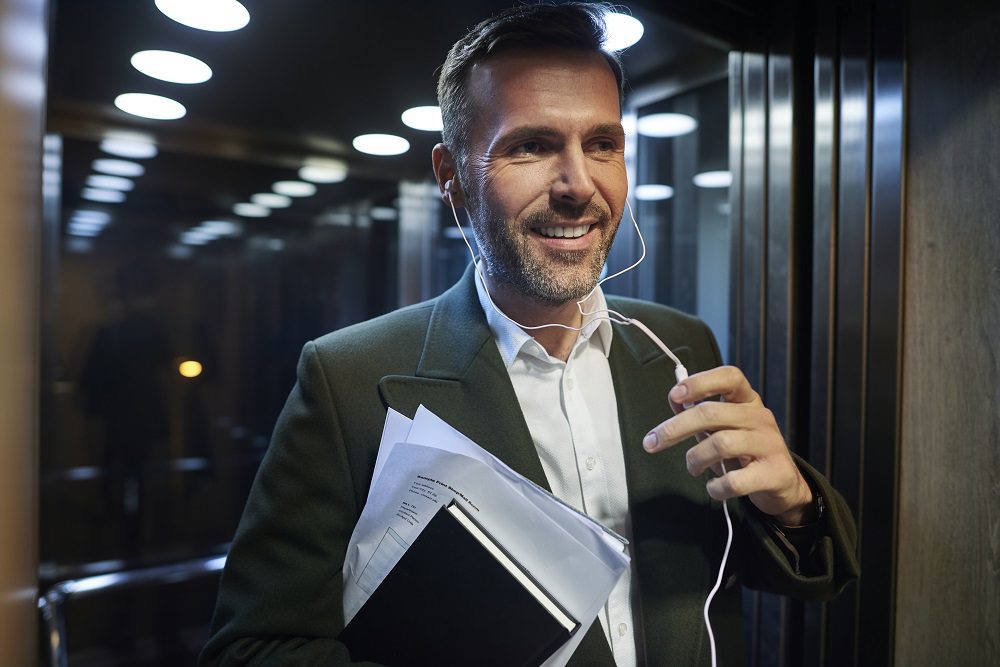
It is true that COVID-19 has changed every little aspect of our lives, including the way we ride elevators. But we have to adjust and take precautions in order to stay safe and healthy.
As states began reopening, people had to return to their workplaces. The same measures you take every day at work, or on your way to the office, should be taken in an elevator as well. Especially for people who live in big cities like New York, for example, going to work implies several elevator rides a day.
Elevator rides should be taken more seriously, because, without safety measures in place, they can become important factors in spreading the virus, according to research. COVID-19 can spread quite easily, through coughs and expelled droplets, either contaminating people or nearby surfaces. Moreover, the virus can spread through aerosols, expelled when people breathe or talk.
Even more, crowded, small places with poor ventilation are considered very risky in the transmission of the virus. According to The New York Times, elevators pose a huge risk, as they’re enclosed metal boxes with “frequently-touched buttons.”
“Risks for coronavirus from riding on the elevator are low. However, continue to take precautions while riding on the elevator. Always wear a mask/facial covering,” agreed Dr. Simone Wildes, infectious disease specialist at South Shore Health.
“Time is our biggest risk reducer,” Ellerin said. “The short time people spend on elevators together will mitigate against large amounts of transmission”.
Read on and learn what you can do to lower the risk of catching the virus while riding an elevator! And don’t worry, as long as you follow these measures, you’ll be safe.

Try to social distance
The days when the elevators were crowded and uncomfortable are long gone. Buildings should “limit the number of people to be six feet apart in an elevator,” says Patricia Whitley-Williams, MD, chief of pediatric allergy, immunology, and infectious diseases at Rutgers Robert Wood Johnson Medical School in New Brunswick, New Jersey.
It’s expected that every building will make up their own safety rules now, from where you should stand to how many people are allowed in an elevator. The size of the elevator is a very important factor. Depending on the size, it might allow 4 people to get in, one in every corner, or fewer if the elevator is smaller.
In most states, the standard elevator must be at least 4 feet 3 inches deep and 5 feet 8 inches wide (130 centimeters by 173 cm).
According to the Stanley Elevator Company, The New York Times reported that a standard elevator in the United States must be at least 4 feet 3 inches deep and 5 feet 8 inches wide. However, we can all agree that keeping six-feet apart in an elevator is impossible.
“I can’t give you the six feet in an elevator — you’d have to have someone on the ceiling and someone on the floor,” Andrew Hardy, head of operations at JEMB Realty, a privately held company that owns and operates residential and commercial properties, told The New York Times.
Get off if you don’t feel safe
Still, “trying to keep six feet apart is challenging on an elevator,” says Suzanne Willard, clinical professor and associate dean of global health at the Rutgers School of Nursing in New Brunswick, New Jersey. “It’s difficult to do.” “You can follow all the rules your building has set out, but what if others don’t? If you feel uncomfortable, get off the elevator,” Willard says.
If you question your safety due to too many people trying to crowd in, just get out of the elevator if you want to avoid confronting them. Additionally, if the elevator is full of people already, it makes sense to just wait for the next one. It surely won’t be a long wait and it’ll be much safer.
“Avoid crowded elevators,” Dr. Whitley-Williams says. Allow plenty of time to get to work so you won’t feel compelled to catch the elevator as soon as one arrives. Also, you care less about social niceties in our current situation, because believe me, most people will forgive you for not holding the elevator door considering the circumstances.
A face mask should be worn all the time
Wearing a face mask is vital, especially in compact, crowded spaces like elevators. “Wearing masks are in order,” Willard says. “Those masks make sure that if you happen to be unknowingly infected you won’t give it to somebody else. And the reason other people wear it is so they don’t unwittingly give it to you,” said William Schaffner, a professor of preventive medicine at Vanderbilt University.
The well respected medical journal, The Lancet, found that masks are very efficient in protecting people from the virus according to a June 2020 study. The N95 mask has been shown to be one of the most effective ones on the market. Despite the effectiveness of the N95, any face covering can help stem the spread of this virus as wearing something is better than wearing nothing at all.
If you wan to go a bit further in protecting yourself, the CDC states that goggles or face shields are another extra layer of protection for both you and anyone you might interact with.
“If you’re someone who can’t avoid the elevator, then you should most certainly be wearing a mask because that’s going to keep you safest,” said Dr. Laura Mendyk, the primary care medical director at SSM Health Dean Medical Group.
“The data on face coverings is very reassuring,” said Dr. Ellen Eaton, assistant professor of infectious diseases at the University of Alabama at Birmingham.
“It is likely that mask use can prevent overwhelming subsequent waves of COVID,” Eaton said. “The catch is that Americans have not embraced face coverings.”

Do not speak
“There is a substantial probability that normal speaking causes airborne virus transmission in confined environments,” according to researchers.
If taking the elevator seemed awkward before the pandemic, things are about to get even more uncomfortable. A recent June 2020 study published in PNAS showed that speaking while you’re in an elevator can help the virus spread more rapidly. Based on this information, many companies and buildings are not allowing people to speak while taking the elevator. No, talking on your cell phone isn’t ok either.
“They should put big signs on the elevator: ‘Do Not Speak,'” Richard Corsi, dean of engineering and computer science at Portland State University and a specialist in indoor air quality, told the Times.
Additionally, Corsi developed a computer model to find out how an infected person can contaminate the elevator and how long the virus remains there. He took into consideration a standard elevator speed, door closing times, and ventilation to show how an infected individual could expel the virus through speaking or coughing.
“Admittedly high uncertainty here, but this single hypothetical scenario does suggest that elevator cabin air may remain infectious for trips beyond infector exit,” he wrote in a tweet.
According to Corsi, a single cough can expel thousands o viral particles. He also added that speaking on the phone could expect one-fiftieth the number of viral particles per second, compared to a single cough.
Corsi estimated that after an infected person coughs or talks and then leaves, the next person who will enter the elevator will be exposed to about 25% of the viral particles expelled.
“The main intent of the exercise was just to show that some level of virus can be sustained in the air beyond an infected person using the elevator,” Corsi said. “I don’t know whether the dose in an elevator is going to be high enough to pose significant risk.”
Take the stairs if you can
Of course, it would be best if you could avoid the elevator altogether. “Take the stairs: We often have a saying, ‘Walk up a flight or down two flights instead of an elevator,” Willard says. “If you can walk, it’s great exercise.”
However, if you need to go on the 30th floor, taking the stairs isn’t an option, but if you work on the third, Williard recommends you skip the elevator ride.
“Risks may include fatigue if you are out of shape, but stair climbing is a great way to include exercise into your daily routines,” Willard says. “A friend of mine would climb 10 stories every day to her office when she came in.”

Don’t touch elevator buttons
Willard suggests wearing “gloves if you must touch anything.” But, “for elevator buttons, an elbow usually does the trick.”
However, make sure you don’t touch your face when wearing gloves if you want them to be effective. Remove them correctly and wash your hands for 20 seconds without touching anything else.
Or you can use a tissue to press the buttons and then toss it in the bin right away. But for staying protected at all times you should “use hand sanitizers and do hand-washing as much as possible,” Willard says.
As soon as you arrive at your workplace, make sure to wash your hands.
Don’t forget that stairs have risks, too
According to the CDC, it would be ideal if the stairwells in your building would be designed one-way, so you don’t have to get in contact with other people who go in the opposite direction.
Still, “stairs can also get crowded, so consider distance,” Willard says. Use your elbow to open doors and don’t touch anything, especially handrails. “Wash your hands when you get to your destination, and until then don’t touch your face,” she says.























